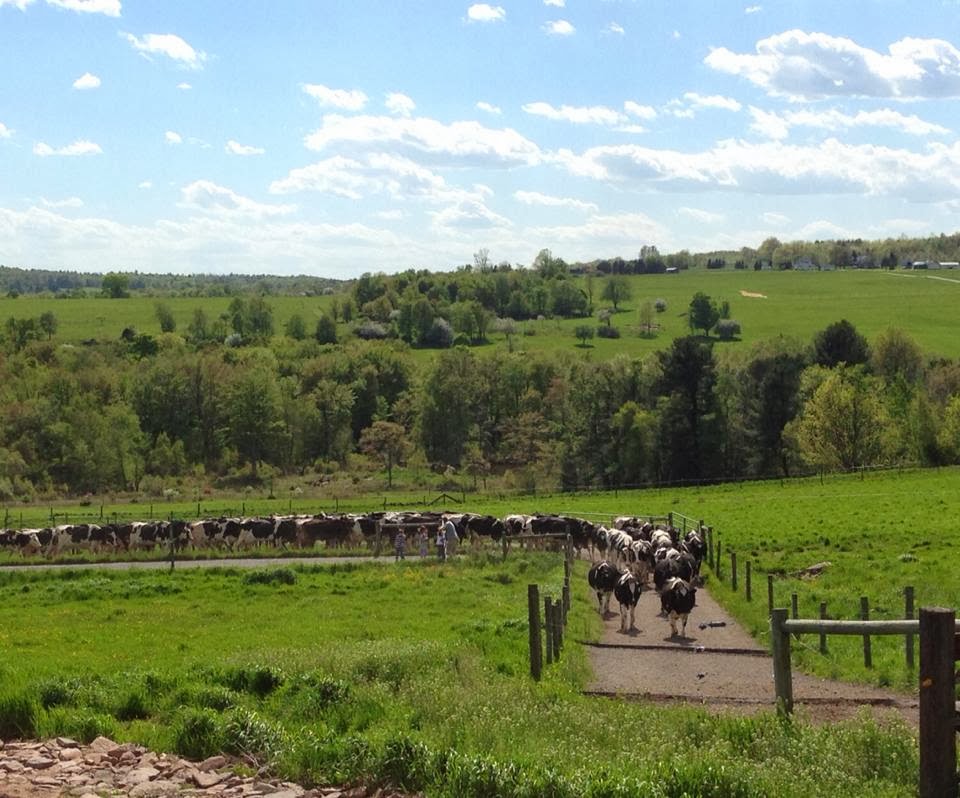You might have seen or tried our lovely beet terrine salad. We roast farm-fresh beets and layer it with Georgic cheese, chill it and serve on a bed of red mustard greens topped with pine nuts. It's a creamy, fresh salad that is at once unexpected and exactly what meets the demands of this immune-taxing weather we've been having. Part of this dishes strength is in the vitamin-packed roasted beets and deliciously fresh mustard greens, but it must be said that the Geogic cheese us what really makes this salad stand out.
Georgic cheese, which we source from Pennsylvania's Calkins Creamery, is of the Quark-style German tradition. Quark cheeses are akin to the commercial variety cottage cheese, though that might be considered slander to our European brethren.
It is created by warming soured milk until the right amount of milk protein has coagulated. It is stirred continuously in order to keep it creamy--unlike it's curdy cousin. It is then placed into cheesecloth and strained. The amount of whey left after straining determines whether the cheese remains like a creamy spread or becomes more crumbly, like feta.
In Germany, this cheese is often fruit flavored and sold in tubs. It is spread on toast at breakfast or on a slice of fresh bread in a sandwich at lunch. It is also used in making cheesecake. In America, this cheese is especially popular in the Midwest and usually referred to as Farmer's Cheese.
The Georgic cheese, which is creamy and bright white, is quite versatile. Not only can it be used in our terrine, but I think it would be excellent in tiramisu or sweetened with honey and used as fruit dip or mixed with herbs and a little salt and pepper for veggie dip.
By any measure, the Georgic cheese we source from Calkins Creamery is delightful and a real winner. In fact, just last year it won first place in it's category at the American Cheese Society competition held in Madison, Wisconsin.










